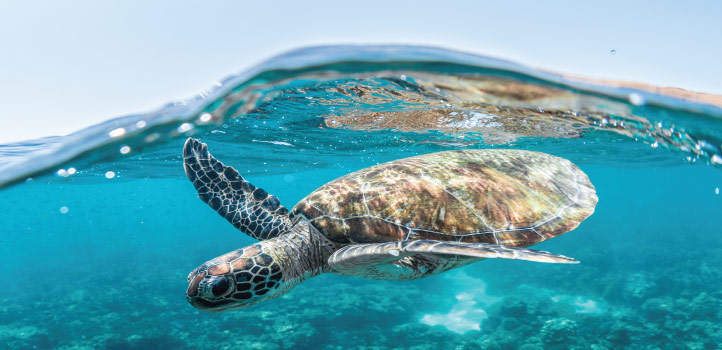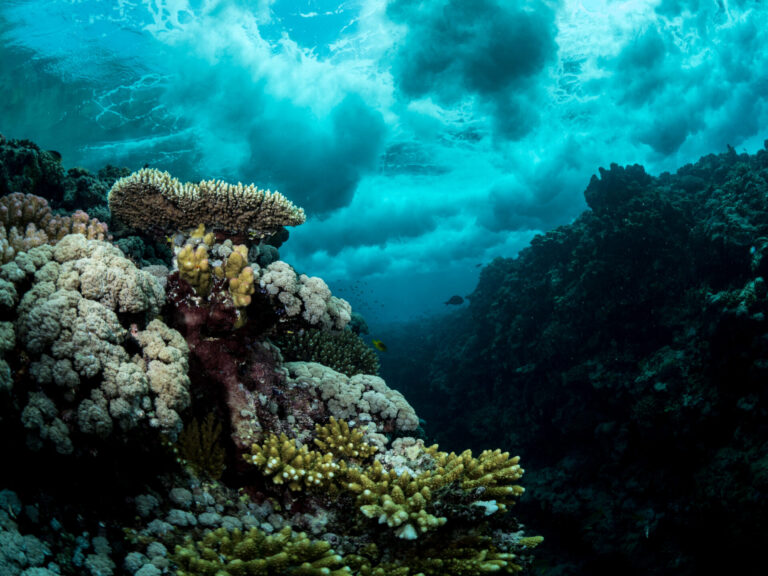Marine Science
Red Sea turtle hatchlings are feeling the heat
The balance of the sexes in marine turtle hatchlings may be disrupted by high sand temperatures at nesting sites around the Red Sea.

KAUST marine scientists are finding that turtle hatchlings born in the region could now be predominantly female. © 2020 KAUST; Anastasia Serin. /en/article/1055/red-sea-turtle-hatchlings-are-feeling-the-heat
KAUST marine scientists are finding that turtle hatchlings born in the region could now be predominantly female. © 2020 KAUST; Anastasia Serin. /en/article/1055/red-sea-turtle-hatchlings-are-feeling-the-heat
Analyses by KAUST researchers of sand temperatures at marine turtle nesting sites around the Red Sea indicate that turtle hatchlings born in the region could now be predominantly female. These findings hold significant implications for the survival of marine turtle species as temperature increases take hold, driven by anthropogenic climate change.
“Marine turtles are particularly vulnerable to temperature shifts because they demonstrate temperature-dependent sex determination, meaning that the sex of hatchlings is determined by the temperature of the nest during incubation,” says Lyndsey Tanabe, a KAUST Ph.D. student investigating the nesting ecology and conservation strategies of marine turtles, under the supervision of Michael Berumen.
The Red Sea is home to five out of seven species of sea turtles, with endangered green turtles and critically endangered hawksbill turtles nesting along its coastlines. Current research suggests that the pivotal temperature to maintain a 50:50 sex ratio is 29.2 degrees Celsius, above which hatchlings are predominantly female. Temperatures above 33 degrees Celsius can cause hatchling deformities and even mass mortality.

Making a dash for it: a turtle hatchling emerges from the sand along the Red Sea coast.
© 2020 Morgan Bennett Smith
“Marine turtles have survived since the late Triassic period and have adapted to past climatic shifts,” says Tanabe. “The current rate of anthropogenic-driven temperature change is unprecedented.”
“We examined sand temperature profiles at Red Sea nesting sites to improve our understanding of the current turtle population,” explains Tanabe.
The team selected five sites distributed across the region that are favored by hawksbill and green turtles. Automated data loggers collected sand temperature data at the nest depths of both species every 15 minutes for five months (May to September 2018, corresponding to the presumed nesting season).
The sand temperature exceeded 29.2 degrees Celsius at all study sites, with the exception of Small Gobal Island in the northern Red Sea. These results suggest that feminization of hatchlings could already be occurring.

Understanding the environmental threats to Red Sea turtles, such as plastic and heavy metal pollution, is critical to the success of conservation strategies.
© 2020 Morgan Bennett Smith
“We must be cautious in claiming that feminization is definitely happening,” says Tanabe. “The Red Sea is generally warmer than other nesting beaches around the world, so these turtles may have already adapted to a higher pivotal temperature threshold. It is concerning, however, that sand temperatures as high as 36 degrees Celsius were measured at some sites. This could pose a considerable threat to their survival.”
Tanabe’s findings will contribute to ongoing national consultations on marine conservation, particularly in light of the proposed megadevelopments along Red Sea coasts. “I hope these development projects prioritize the conservation of turtle nesting sites, especially those likely to produce balanced sex ratios,” she says.
Tanabe is also studying turtle population dynamics and genetics, and threats such as plastic and heavy metal pollution. She notes that understanding these factors is critical to the success of conservation strategies.
References
- Tanabe, L.K., Ellis, J., Elsadek, I. & Berumen, M.L. Potential feminization of Red Sea turtle hatchlings as indicated by in situ sand temperature profiles. Conservation Science and Practice e266 (2020).| article
You might also like

Marine Science
A place to trial hope for global reef restoration

Marine Science
Reef-building coral shows signs of enhanced heat tolerance

Marine Science
Plastic-munching bacteria found across the seven seas

Marine Science
AI reveals the universal beauty of coral reef growth

Marine Science
Tiny crabs glow to stay hidden

Marine Science
Mass fish deaths linked to extreme marine heatwave in Red Sea

Marine Science
Weeding out the secrets of Red Sea macroalgae

Bioscience




